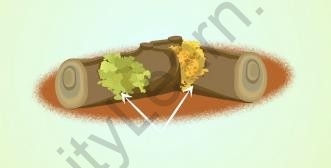Table of Contents
Table of Contents
- Symbiotic Nutrition
– Nitrogen Fixation
- Summary
- Did You Know?
- What’s Next?
In the previous segment of the chapter of ‘Nutrition in Plants’, we studied about parasitic nutrition. In this segment, let us learn about symbiotic nutrition.
What are Symbionts?

Symbionts
- Organisms that live in association with other organisms are called Symbionts. This association of living together is called Symbiosis.
- The two organisms in a symbiotic relationship are different.
- They can live attached to each other or inside one another’s body.
- Symbiosis is meant for the benefit of both organisms but sometimes it can also be beneficial for one and harmless to the other.
For example, Lichens are the symbiotic association of algae which live inside fungal bodies. The algae benefit from the protective fungal shelter while the fungi benefit from the food. This is because algae being photosynthetic, prepare their own food. This type of ‘give and take’ relation helps both the organisms.

Lichens
What is nitrogen fixation?

Rhizobia bacteria
- Rhizobia bacteria form a symbiotic association with the root nodules of legumes.
- They carry out the process in which the atmospheric nitrogen is converted into a utilisable form, called the Nitrogen fixation.



